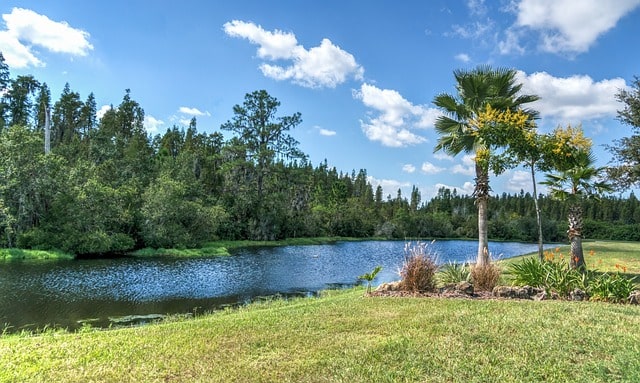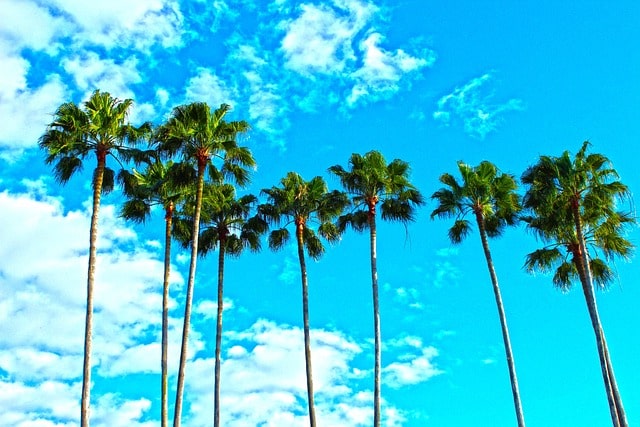Introduction
Short hedges are vital in transforming landscapes, especially in a region like Florida with its diverse climate and unique gardening challenges. Whether you want to add privacy, define boundaries, or enhance your garden’s aesthetics, the right short hedge plants can make all the difference.
This guide will help you discover what plants make good short hedges in Florida, offering top picks, essential care tips, and answers to common questions.
Importance of Short Hedges in Florida Landscaping
Role in Enhancing Aesthetics and Functionality
Short hedges are more than just decorative plants. They:
- Define garden spaces and pathways.
- Serve as natural borders without obstructing views.
- Provide a polished, well-maintained look to your landscape.
Popular Uses of Short Hedges
- Privacy Buffers: Ideal for creating intimate spaces in patios or gardens.
- Windbreaks: Short hedges can reduce wind intensity in coastal areas.
- Noise Reduction: Strategically placed hedges minimize urban noise.
- Wildlife Habitat: Many hedge plants support pollinators and birds.
Overview of Short Hedges in Florida Landscaping
Climate and Soil Conditions in Florida
Warm temperatures, high humidity, and occasional droughts characterize Florida’s climate. Key considerations include:
- Soil Types: Florida has sandy soil, which drains quickly but lacks nutrients.
- Temperature: Subtropical and tropical zones support a wide range of plants.
- Rainfall: Seasonal rains can benefit or harm plants without proper drainage.
Key Challenges and Opportunities for Plant Growth
- Challenges: Pests, salt tolerance near coasts, and occasional freezes in northern areas.
- Opportunities: Long growing seasons and ample sunlight provide excellent conditions for robust plant growth.
Importance of Selecting the Right Plants
Choosing the perfect hedge plant involves several factors:
- Growth Rate: Fast-growing plants fill gaps quickly but may require frequent trimming.
- Maintenance Needs: Low-maintenance options save time and effort.
- Drought Resistance: Plants that withstand dry spells are ideal for Florida’s occasional droughts.
- Pest and Disease Resistance: Choose hardy plants less susceptible to common issues.
Top 10 Plants for Short Hedges in Florida
Brief Introduction to the List
Here’s a curated list of the best short hedge plants, selected for their adaptability to Florida’s climate and landscaping needs.
Characteristics and Benefits of Each Plant
1. Boxwood (Buxus spp.)
- Characteristics: Dense, evergreen foliage; thrives in partial to full sun.
- Ideal Conditions: Well-drained soil with moderate watering.
- Benefits: Low-maintenance and ideal for formal hedges.
2. Indian Hawthorn (Rhaphiolepis indica)
- Characteristics: Compact shrub with glossy leaves and fragrant flowers.
- Ideal Conditions: Drought-tolerant; grows well in sandy soils.
- Benefits: Adds a touch of color with minimal care.
3. Dwarf Yaupon Holly (Ilex vomitoria ‘Nana’)
- Characteristics: Rounded shape, small leaves; drought and salt-tolerant.
- Ideal Conditions: Full sun to partial shade, tolerates a variety of soils.
- Benefits: Great for coastal gardens and requires minimal trimming.
4. Coontie (Zamia pumila)
- Characteristics: Native Florida cycad with fern-like foliage.
- Ideal Conditions: Thrives in sandy, well-drained soils; drought-tolerant.
- Benefits: Low maintenance and adds a unique tropical touch.
5. Firebush (Hamelia patens)
- Characteristics: Vibrant orange-red flowers; attract pollinators.
- Ideal Conditions: Full sun to partial shade; adaptable to most soils.
- Benefits: Adds color and supports local wildlife.
6. Dwarf Schefflera (Schefflera arboricola)
- Characteristics: Evergreen shrub with glossy leaves.
- Ideal Conditions: Prefers partial to full sun and tolerates varied soils.
- Benefits: Easy to shape and great for tropical-themed gardens.
7. Dwarf Podocarpus (Podocarpus macrophyllus ‘Pringles’)
- Characteristics: Dense, needle-like foliage; evergreen.
- Ideal Conditions: Tolerates full sun and light shade; drought-tolerant.
- Benefits: Perfect for modern, minimalist landscaping.
8. Simpson’s Stopper (Myrcianthes fragrances)
- Characteristics: Fragrant flowers, orange berries; Florida native.
- Ideal Conditions: Well-drained soils in full sun to partial shade.
- Benefits: Low maintenance and attracts birds.
9. Walter’s Viburnum (Viburnum obovatum ‘Densa’)
- Characteristics: Evergreen shrub with small, dark green leaves.
- Ideal Conditions: Thrives in wet or dry soils and full sun.
- Benefits: Excellent for privacy and formal hedges.
10. Azalea (Rhododendron spp.)
- Characteristics: Flowering shrub with vibrant blooms.
- Ideal Conditions: Partial shade with acidic, well-drained soil.
- Benefits: Adds seasonal color to your landscape.

Seasonal Care and Maintenance Guidelines
Tips for Each Season
- Spring: Fertilize and prune for shape and growth.
- Summer: Monitor for pests and water during dry spells.
- Fall: Mulch to retain moisture and control weeds.
- Winter: Protect sensitive plants from frost in northern Florida.
Preventing Common Issues
- Pest Control: Use natural remedies or insecticidal soap to address aphids and mites.
- Disease Management: Ensure proper spacing for air circulation to prevent fungal issues.
- Overwatering: Avoid waterlogged soil by checking drainage.
Frequently Asked Questions
1. How tall should short hedges be?
Typically, short hedges range from 2 to 4 feet in height, depending on their purpose.
2. Can I mix different plants for a hedge?
Yes, combining plants can add visual interest and biodiversity.
3. How often should I trim my hedges?
Trim hedges 2-3 times a year to maintain their shape and health.
4. Are there native plants suitable for Florida hedges?
Yes, Coontie and Simpson’s Stopper are excellent native options.
| Plant Name | Characteristics | Ideal Growing Conditions | Benefits |
|---|---|---|---|
| Boxwood | Dense, evergreen foliage | Partial to full sun; well-drained soil | Formal, low-maintenance, versatile |
| Indian Hawthorn | Glossy leaves, fragrant flowers | Drought-tolerant; sandy soils | Adds color, minimal care |
| Dwarf Yaupon Holly | Rounded, small leaves | Full sun to partial shade; tolerant soils | Salt-tolerant, minimal trimming |
| Coontie | Fern-like foliage, native to Florida | Sandy, well-drained soils; drought-tolerant | Unique tropical touch, low maintenance |
| Firebush | Orange-red flowers attract pollinators | Full sun to partial shade; adaptable soils | Supports wildlife, vibrant color |
Conclusion
Short hedges are a versatile addition to any Florida landscape, offering beauty, functionality, and environmental benefits. By selecting the right plants from our top 10 picks, you can create stunning hedges that thrive in Florida’s unique conditions.
Start planning your landscape today and enjoy the benefits of a beautifully designed outdoor space!
